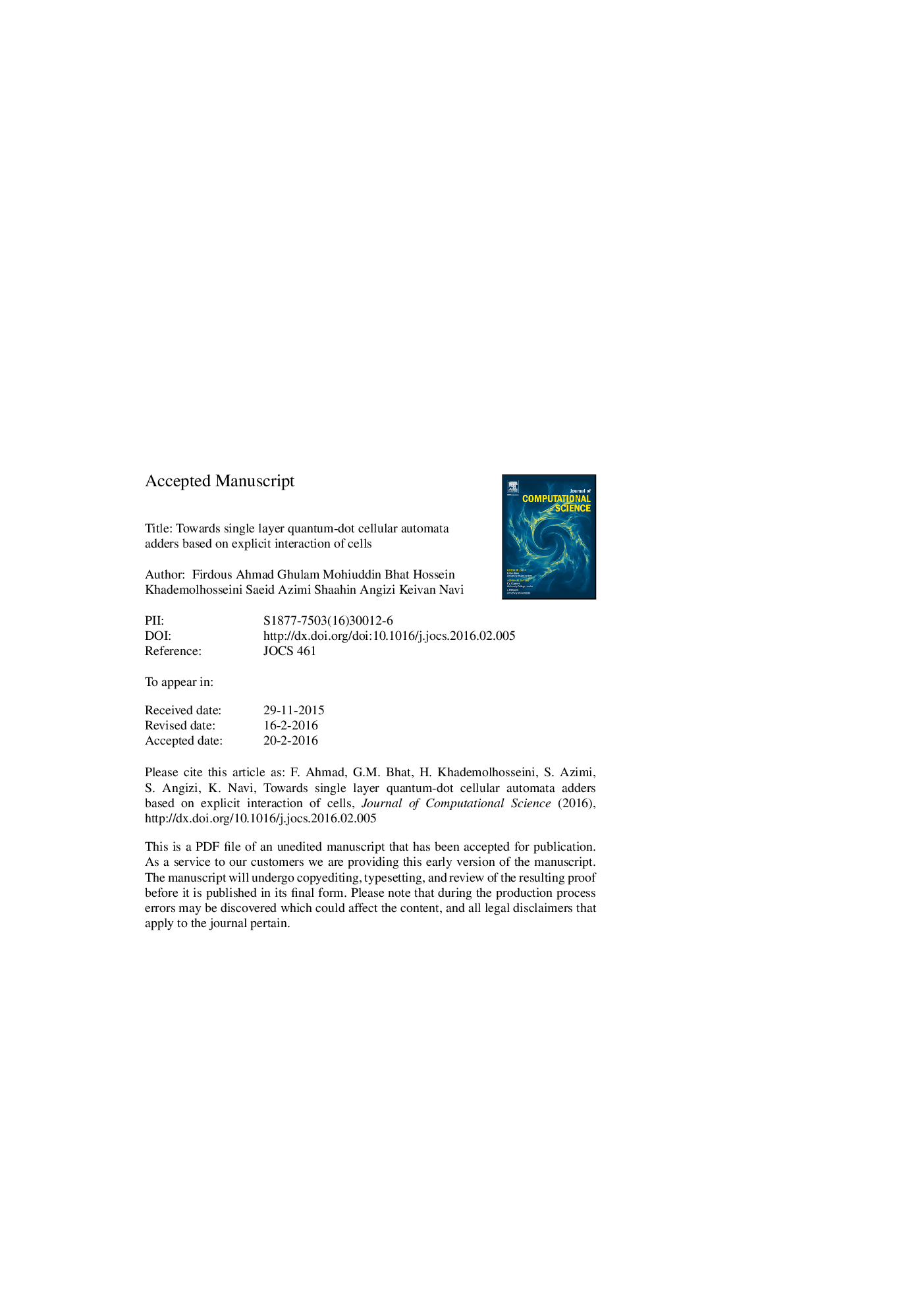| Article ID | Journal | Published Year | Pages | File Type |
|---|---|---|---|---|
| 6874514 | Journal of Computational Science | 2016 | 17 Pages |
Abstract
Quantum-dot cellular automata is one of the most prominent nanotechnologies considered to continue scaling-down trend of sub-micron electronics. Therefore, numerous combinational and sequential circuits have been redesigned and implemented using this new technology. Considering QCA full adder cell as the basic building block in designing arithmetic circuits, great deals of attention have been paid to this research field targeting to diminish circuit latency and complexity. In this paper, contrary to conventional gate-level implementation approaches used in QCA technology, a new explicit interaction approach is utilized for designing QCA circuits. Thus, in the first step, a new well-optimized structure for three-input Exclusive-OR gate (TIEO) is proposed that is based on cell interaction. Accordingly, a low complexity and ultra-high speed QCA one-bit full-adder cell is designed employing this structure. In the next step, a comprehensive energy consumption analysis and comparison is performed over previously published QCA full-adder cells and the proposed design. QCADesigner and QCAPro tools are used for verifying circuit functioning and estimating dissipated energy.
Keywords
Related Topics
Physical Sciences and Engineering
Computer Science
Computational Theory and Mathematics
Authors
Firdous Ahmad, Ghulam Mohiuddin Bhat, Hossein Khademolhosseini, Saeid Azimi, Shaahin Angizi, Keivan Navi,
